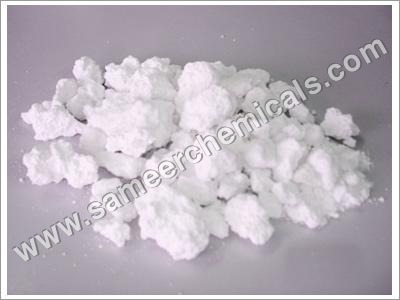Calcium Chloride Anhydrous Lumps
Product Details:
Calcium Chloride Anhydrous Lumps Price And Quantity
- 3 Ton
Calcium Chloride Anhydrous Lumps Trade Information
- Per Day
- 1 Week
Product Description
Calcium Chloride Anhydrous Lumps
Clients can purchase from us accurately processed grade Calcium Chloride Anhydrous Lumps. Owing to its insolubility in water, the provided lumps are widely used as desiccant for various solvent. This chemical is processed using quality-tested chemical compounds and modern technology in line with set industry quality standards at our in-house production unit. Apart from this, our esteemed clients can purchase these Calcium Chloride Anhydrous Lumps from us in various packaging options as per their wide requirements at cost-effecting prices.
Calcium Chloride Anhydrous Lumps Features:
- Longer shelf life
- Accurate composition
- Purity
- Effectivenes
Products Other Information:
Calcium chloride Basic information
- Product Name: Calcium chloride
- Synonyms: PELADOW(R) SNOW AND ICE MELT Anhydrous calcium chloride;anhydrouscalciumchloride;CaCl2;Calcium chloride (CaCl2);Calcium chloride pellets;calciumchloraide;calciumchloride(anhydrous)
- CAS: 10043-52-4
- MF: CaCl2
- MW: 110.98
- EINECS: 233-140-8
- Mol File: 10043-52-4.mol
Calcium chloride Chemical Properties
- Mp 772 °c(Lit.)
- Bp 1600 °c
- Density 1.086 G/Ml At 20 °c
- Vapor Pressure 0.01 Mm Hg ( 20 °c)
- Refractive Index N20/D 1.358
- Fp >1600°c
- Storage Temp. 2-8°c
- Solubility H2o: Soluble
- Form Powder
- Water Solubility 740 G/L (20 ºc)
- Sensitive Hygroscopic
- Merck 14,1659
- Stability: Stable. Incompatible With Zinc, Water, Strong Acids, Methyl Vinyl Ether, Bromine Trifluoride, Boron Oxide, Calcium Oxide. Hygroscopic.
- Cas Database Reference 10043-52-4(Cas Database Reference)
- Nist Chemistry Reference Calcium Dichloride(10043-52-4)
- Epa Substance Registry System Calcium Chloride (Cacl2)(10043-52-4)
Safety Information
- Hazard Codes Xi
- Risk Statements 36/37/38-36-36/38-41-22
- Safety Statements 26-39-24-22-36
- F 3
- HS Code 28272000
- Hazardous Substances Data 10043-52-4(Hazardous Substances Data)
Calcium chloride Usage And Synthesis
- Chemical Properties white beads or powder
- Usage desiccant
- Usage: For the treatment of hypocalcemia in those conditions requiring a brief increment in blood plasma calcium levels, for the treatment of magnesium inebriation because of over dosage of magnesium sulfate, and used to battle the malicious impacts of hyperkalemia
- General Description : White to grayish strong. Sinks and blends with water.
- Air and Water Reactions: Deliquescent. Water dissolvable. Adding Calcium chloride to high temp water created rough bubbling, [MCA Case History No. 69].
- Reactivity Profile: Bromine trifluoride quickly assaults the accompanying salts: barium chloride, cadmium chloride, Calcium chloride, cesium chloride, lithium chloride, silver chloride, rubidium chloride, potassium bromide, potassium chloride, potassium iodide, rhodium tetrabromide, sodium bromide, sodium chloride, and sodium iodide [Mellor 2 Supp. 1:164, 165 1956]. Long haul introduction of Calcium chloride arrangement upon a zinc covered stirred iron vessel brought about moderate development of hydrogen which lighted and blasted [Bretherick, fifth Ed., 1995].
- Health Hazard: Inhalation causes bothering of nose and throat. Ingestion causes aggravation of mouth and stomach. Contact with eyes (especially by dust) causes disturbance and conceivable transient corneal harm. Contact of strong with dry skin causes gentle aggravation; solid arrangements can bring about checked bothering, even a shallow blaze.
Calcium chloride Preparation Products And Raw materials
- Raw materials Hydrochloric acid-->Calcium carbonate-->Calcium hydroxide -->Calcium oxide-->Sodium chlorate-->CALCIUM CARBONATE-->Calcium chloride hexahydrate-->Calcium chloride solution 36-40%, (1box=27kgs)-->Calcium chloride dihydrate

Price:
- 50
- 100
- 200
- 250
- 500
- 1000+




